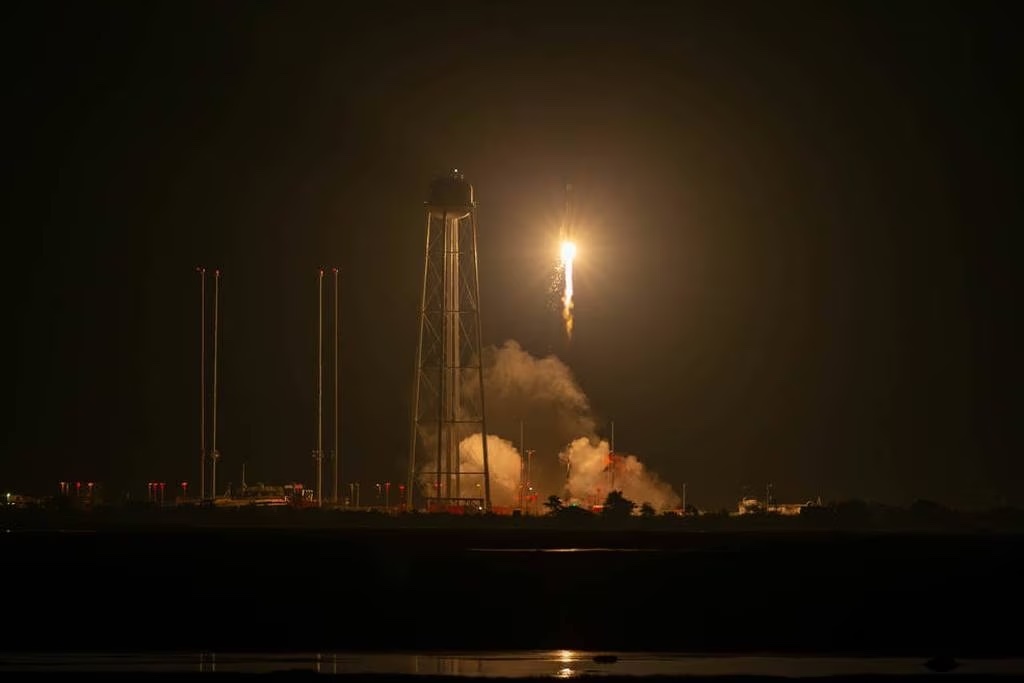8.10.2023

A suborbital version of Rocket Lab's Electron rocket, dubbed HASTE, launched for the first time June 17, demonstrating its utility to support hypersonic testing. (NASA/Patrick Black)
WASHINGTON — In the six months since Rocket Lab revealed its hypersonic test vehicle, the California-based launch company has flown its first mission, signed deals for at least five more and been selected to demonstrate high-speed test capabilities for the Defense Innovation Unit.
The Hypersonic Accelerator Suborbital Test Electron vehicle, or HASTE, is a modified version of Rocket Lab’s Electron rocket and is designed to support high-speed test efforts — an area of particular focus for the Defense Department as it looks to validate and field its first hypersonic weapons in the coming years.
Brian Rogers, senior director of global launch services, told C4ISRNET that because of the Pentagon’s hypersonic flight testing push, he expects demand for HASTE to continue to grow as the company logs more flights.
“Leadership across DoD has talked about this as a problem that needs solving,” he said in a Sept. 28 interview. “I don’t see the threat environment changing much and so I think from a demand signal, it is only increasing.”
Hypersonic vehicles can travel and maneuver at or above Mach 5, and the Defense Department is investing in 70 different efforts across the military services to field the high-speed weapons and the enabling technology to support them. Testing infrastructure has been a significant limiting factor in the development process, with most major programs conducting only a few trials each year.
Rocket Lab decided to pursue HASTE last year, after the Pentagon’s then-Principal Director for Hypersonics Mike White called for the testing community to expand the number of flight test opportunities available to programs and set an ambitious target of one event per month.
The company’s workhorse Electron rocket was already matching or exceeding that once-a-month launch cadence for orbital launch missions, and Rocket Lab saw an opportunity to take advantage of its pace and existing production line to get after the department’s challenge. The team worked fast to understand what hypersonic environments HASTE could achieve and make what Rogers described as “minor modifications” to Electron.
Its first flight in June was for the Pentagon’s Multi-Service Advanced Hypersonic Testbed, MACH-TB. The effort is led by the Naval Surface Warfare Center’s Crane Division with Leidos as the prime contractor. Just days after that launch, Rocket Lab secured a contract with a “confidential” customer and in September the company announced Leidos had selected HASTE to fly four more MACH-TB launches.
The Defense Innovation Unit also selected HASTE for its Hypersonic and High-Cadence Airborne Test Cadence program, or HyCAT — another effort to boost the department’s flight test enterprise.
Rogers noted that while the path to HASTE’s first flight was relatively short, the vehicle will require further modifications to support future launches, depending on the type of payload it’s carrying and the demands of the mission. He characterized the initial mission as a pathfinder, proving the company could modify Electron, jump through regulatory and contractual processes and prepare for launch on rapid timelines.
“That launch was really to prove to everyone that we could do it,” Rogers said.
The company has a plan to further modify HASTE over time, he added, depending on what needs its customers have.
“There are some test payloads coming nearer term that require minor modifications and then some later that require more,” he said. “It’s sort of a waterfall where we incorporate more capability over the next couple of years.”
While he wouldn’t specify the price of a HASTE rocket, Rogers said it’s in the range of $10 million depending on a customer’s requirements, which is a fraction of the cost of a full-up DoD test, which can be as much as $100 million.
Rogers said he thinks that price point and Rocket Lab’s ability to move quickly will give HASTE will broad appeal in the commercial market, as companies seek platforms to test hypersonic payloads for non-defense missions. The rocket could also help meet NASA’s need for launch support for suborbital experimentation.
“It leverages everything that we do already — what I’ll call ‘mass production’ of launch vehicles, having regulatory frameworks in place to go fast and, frankly, just a price point that is more commercial than the old way of doing it,” he said. “[It’s] a huge enabler for these programs that are used to spending orders of magnitude more.”
Quelle: C4ISRNET
